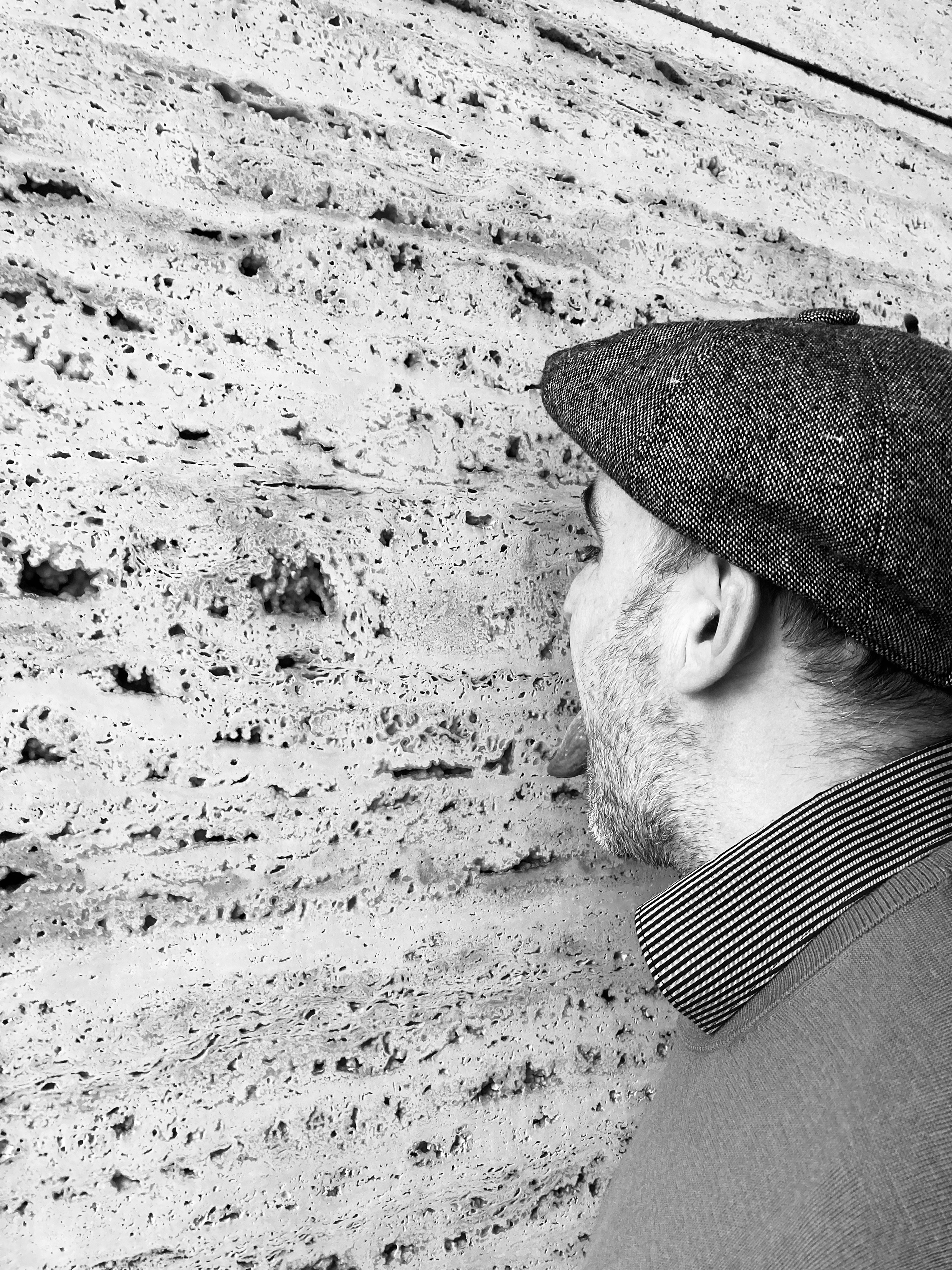Roman Emperor Hadrian built the Temple of Venus and Roma over the remains of the Domus Aurea erected by Emperor Nero on Rome’s Oppian Hill. The golden house initiator was considered a symbol of decadence, a tyrannical, self-indulgent and debauched person resented by the Roman aristocracy and by Roman citizens who thought him compulsive and corrupt, even believing him as the instigator of the Great Fire of Rome. He was overthrown by his Senate and committed suicide aged 30. A story of a man that seems to have engendered hatred, whilst Hadrian was embraced by the majority of the people of Rome.
Ivan Blasi
On one of his many trips, Hadrian met a young man called Antinous from the Greek province of Bythnia in what is now Turkey. Antinous was an intelligent and wise kid who became Hadrian’s constant companion, and who Hadrian actually loved and, probably, was loved in return. After two years of adventures together, the romance ended in tragedy when Antinous drowned in the Nile in mysterious circumstances.
Devastated by this tragic event and as a display of love, Hadrian built a whole city called Antinoöpolis in the place of misfortune, locked between the river and the rock on a narrow strip of arid land. He also named a star after him and called the red Nile lotus, Antinous. Hardly anything remains from that city which today is called Sheikh ‘Ibada. According to Marguerite Yourcenar in Memoirs of Hadrian, “The ruins of the city founded by Hadrian in honour of his favourite were still standing at the beginning of the 19th century […] Towards the middle of the 19th century, an Egyptian industrialist transformed these remains into lime, and used them in the construction of sugar factories,” a bittersweet ending for the tangible part of one of the most tragic stories of love.
There are many stories of love in which architecture is involved as a proof of love, many after a death. The first that come to mind are the beautiful Kodai-Ji Temple in Kyoto built by Kita-no-Mandokoro in memory of her husband Toyotomi Hideyoshi in 1606, with the garden designed by Kobori Enshū; the Taj Mahal in Agra commissioned by Mughal Emperor Shah Jahan in 1631 in the memory of his wife Mumtaz Mahal; and Le Petit Trianon, in Versailles, built at the request of Louis XV for his mistress Madame de Pompadour and later Madame de Barry, to become later the place of Marie-Antoinette who in 1778 had the Temple de l’Amour built in its gardens. All these are ostentatious displays of what love can buy, in stone. Architecture marvels around the world have also become popular spots where people propose to their beloved, places such as the Eiffel Tower, the Brooklyn Bridge, the Colosseum, Tower Bridge, the Louvre, Fontana di Trevi, even the Taj Mahal – a mausoleum – and also many contemporary buildings such as the Sydney Opera House or the Shard in London. They could be called the most-loved places.
Architecture is everywhere and in everything and thus, it can be lovable. We fall for people, and we fall for constructions, sometimes for their overall values and sometimes simply for their aesthetical qualities: because of how they are or for their looks. We can like architecture or architectural objects by having positive thoughts and feelings towards it and finding its company rewarding. Our brain might be able to behave differently when we’re in love with a building or the profession itself, compared to when we like it, and we experience a deep sense of care and commitment towards it. Being “in love” would also involve feelings of sexual arousal and attraction and we are aware that people’s own views of love suggests that not all love is the same. In any case, we are aware about the passion that architecture arises in architects and among non-architects, an intense longing for it which also includes commitment with a deep attachment towards the profession.
Some constructions have been saved from destruction because a group of people are able to foresee their qualities and their timeless and essential interest for the generations to come. This could be an act of pure scientific historic stocktaking but my experience with people from all over the world who work to document, protect, and disseminate architecture through communities such as docomomo, has proved to me that there is a true love and passion towards this commitment. A love for the elaborated processes of thinking and developing ideas in different historic times and for the built results which are the ones that we can all see and love. Half a century ago, the success for a city was a synonym for growth, cars, and never-ending construction and sprawl. This made for many disastrous decisions which would be inconceivable today: Brussels and what is known as Brusselisation, the demolition of Fisac’s Pagoda in Madrid, the same fate for Pennsylvania Station in New York and Chicago’s Stock Exchange Building and many more, always to the detriment of places and communities. Destruction still takes place such as the Smithsons’ Robin Hood Gardens in 2018, a reminder that our shared heritage is fragile, like love can be fragile.
Many of these destructions are clear signs of ignorance that prioritised and prioritise unleashed speculation and do not take into consideration the immense loss of common identity. We then have the urge and need to repair – not always rebuild – in order to recover trust in love, like after an emotional breakup. In the case of natural disasters and wars, it is interesting to recall the 1964 Venice Charter and the foundation of ICOMOS the year after in Cracow and Warsaw and the fact that the charter never rigidly insisted on ruling out reconstruction in the case of destruction by war. It was the 2000 Charter of Cracow that states that reconstruction of an entire building, destroyed by armed conflict or natural disaster, is only acceptable if there are exceptional social or cultural motives that are related to the identity of the entire community. The word love is not used, but we are aware that it involves the fulfilment of the individual through identity-construction and role-identification and the “transformation” of the individual through personal and collective enhancement.
Ego, and not only love, was one of the main drivers of mankind’s impetuous architectural creations of the past which we have previously spoken about. Love for and in architecture today has evolved towards an approach that includes the sense of community and the love for the planet itself. Manifestos such as Lacaton & Vassal’s “Never Demolish” are slowly being assimilated by more people because of the change in how we relate to what is built or transformed today. Buildings are not just representations of our collective capacity, but they are also holders of our memories, histories, and relationships. Architecture is an action, not an inanimate object and as such, we can share our love for it. We become what we love and who – and what – we love shapes what we become (St. Clare of Assisi); we shape buildings and buildings shape us (Churchill).
Love in architecture, or its lovability, today has to do with inclusiveness and ecologic, social, and even economic sustainability. Many recent works of architecture are the result of collective initiatives in their inception and in the way they are used later. This makes more people involved and, call it love or care, they take more responsibility for that place, how we are attached to the community, how we experience our world and our community. The patterns of social activity, the cultural openness, commercial and cultural relationships are the ones that make a place, and what we love about the cities we live in is those things that have been defined by communities at human scale. Among the 40 works that the jury of the 2022 European Union Prize for Contemporary Architecture – Mies van der Rohe Award chose, this is common ground, works where everyone contributes to everyone else’s experience. As Tatiana Bilbao said, “right now the most pressing paradigm is how to search for equity and democracy through inclusion and acceptance of diversity”, love for each other.
Not long ago we spoke about the liveability of cities, and we now see a stronger concern for loveability, attachment and comfort; qualities that can happen in many different places and not only cities and that, together with emergent creativity allow for a place’s success. Among the 40 we find very interesting examples of collective housing that include both transformation and new construction; education facilities where shared spaces have a very important role; cooperative works; public spaces and gathering places; and a large number of works tackling with cultural heritage – tangible culture, intangible culture and natural heritage. I am sure that in the next years we will see a good preservation of these places because of the love their inhabitants and users already have for them as an intrinsic part of them. Maybe, at first, people from abroad will not share their love for each other in these places but probably those from the community will.
Like in love between people, love for architecture is an emotion that keeps people and architecture bonded and committed to one another, evolving over time to keep us together long enough for both to survive and reach maturity. Architecture will stay for others to love while we will leave becoming part of this architecture’s many aspects and stories; some of these stories will also survive, most will disappear with us.

IN THE PHOTO: Ivan Blasi emulating Carolyn Butterworth licking the Barcelona Pavilion




